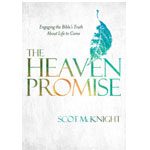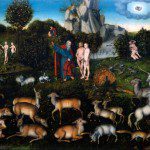In this post today I would like to point to a video featuring Rev. Dr. John Polkinghorne. Dr. Polkinghorne was a very successful scientist, an expert and creative theoretical physicist involved in the discovery of quarks. He was Professor of Mathematical Physics at Cambridge University before he resigned to study for the priesthood. He has since been a parish priest, Dean of the Chapel at Trinity Hall Cambridge and President of Queen’s College, Cambridge. After retirement he continues to write, think, and lecture about the interface between science and faith. I’ve read and commented on a couple of his books – Quarks, Chaos & Christianity and Belief in God in an Age of Science. I hope to read, and perhaps comment on, more of his work.
In this video of a lecture and interview at Point Loma Nazarene University Dr. Polkinghorne discussed the relationship between science and religion.
Polkinghorne covers a number of topics in his lecture – but the general thread of the first portion is a discussion of the questions asked by science, the questions asked by religion, and the gifts that each give to the other.
Is it sufficient to attribute some kinds of “pain and suffering” to the way God created the world for his good purpose? Does this cause a problem in our understanding of God or does it shape our understanding of God?
And on a slightly different note,
Does the beauty of creation – including music, art, and mathematics – point you toward God?
A paraphrase of some of his discussion follows, but the entire lecture is worth listening to.
According to Polkinghorne science and religion are both concerned with truth, but they are asking different questions about the world. Science is asking a single question about how things happen. But there are many other questions science does not address; questions of meaning, value, and purpose. The distinction can be categorized as the distinction between how and why. Science asks how questions, religion asks why questions. This is something of a broad brush, without all of the necessary nuance. But it is, he feels, a useful distinction.
We don’t have to choose between how and why. The insights of science and religion complement each other. They address a different level of our experience of reality. Science is objective and considers the world as an “it.” But there is another realm of contact in relationship – our encounter and relationship with reality. One that science cannot effectively address. The answers a science-only approach yields are inherently unsatisfactory. A religion-only approach gives a global “how” (God did it) but doesn’t really address, and doesn’t need to address, the detailed questions of how.
The answers to the how and why questions are consonant – friends, but in dialog. One doesn’t trump the other. Science can’t be enough – an objective “how” answer is not enough. Music, for example, can be described scientifically as a neural response to the impact of sound waves on the eardrum – this is an objective how answer. Of course, this scientific description hardly exhausts the mystery of music … there is so much more to the sequence of sounds in time as they are perceived.
The gift from science to religion – science tells us about the character of the world in which we live, and the history of the universe. This is a revelation of God’s creation. Not all truth will come through science, but some does. In particular, the insights arising from an understanding of evolution should be viewed as gifts in our understanding of God’s creation. A deist spectator God is a God that fills a scientific gap – the theist God creates for a purpose, a mission, and a relationship. His ways are good even if we don’t always understand – and this includes the ability of creation to flower through change and growth.
About 18 minute into the video Polkinghorne uses the example of evolution and cancer to suggest how science might give an important insight into God’s creation and plan. This seems counter intuitive, but is worth thinking about. The fact that somatic cells can mutate is a necessary consequence of a creation where the realm of diversity is explored through evolutionary mechanism, mutations and selection. We think we could do it better – throw out the nasty things and keep the nice things. But the more science teaches us about the way things actually work the better we understand God’s creation and realize that the good and the bad in this sense are necessarily intertwined.
Religion gives a gift to science – not by answering scientific questions, as a rival to science – but by assessing scientific insights in a broader context. One such question are “why is science possible?” Our depth of understanding of science goes far beyond what is necessary for survival of an organism. Mathematics provides the key that unlocks our understanding of creation. There is an aesthetic pleasure – a beauty – in the mathematics that describes the universe. This is a beauty that rivals the aesthetic pleasure and beauty of music and art. “Ugly” equations and theories are not effective – they don’t have deep explanatory power. There is a deep satisfying aesthetic beauty to the theory of the universe.
Polkinghorne suggests that it is intellectually lazy to simply stop with “that is the way it is.” The common origin in the mind of the creator provides a ground for understanding the beauty of creation. Science is possible because the word is a creation and we are creatures made in the image of the creator. Mathematics comes alongside music, art, and other expressions of beauty and meaning to point us toward God.
There are some interesting ideas here, worth discussion. One that strikes me in particular is the notion of a creation free to grow and develop, and this will mean some presence of pain and suffering – from cancer to tsunamis to birth defects to trees that topple and hill. No human sin involved. This strikes home after having attended a funeral in early January of a woman a few years younger than I am who died of cancer, leaving a husband and four children, and knowing others who have struggled with cancer, both successfully and unsuccessfully. Is it sufficient to say that this is the way the world was created?
Polkinghorne’s discussion of beauty in the theoretical, mathematical explanation of the world is also worth some discussion. I agree with him here, there is a beauty and a depth to the coherence of all creation that rivals music and art in its aesthetic power. It is overwhelming at times and makes science fun. I am not pursuing science for practical empirical benefit, but for the depth of understanding provided. So two questions:
Is it sufficient to attribute some kinds of “pain and suffering” to the way God created the world for his good purpose? Does this cause a problem in our understanding of God or does it shape our understanding of God?
And on a slightly different note,
Does the beauty of creation – including music, art, and mathematics – point you toward God?
If you wish to contact me directly you may do so at rjs4mail[at]att.net
If interested you can subscribe to a full text feed of my posts at Musings on Science and Theology.











